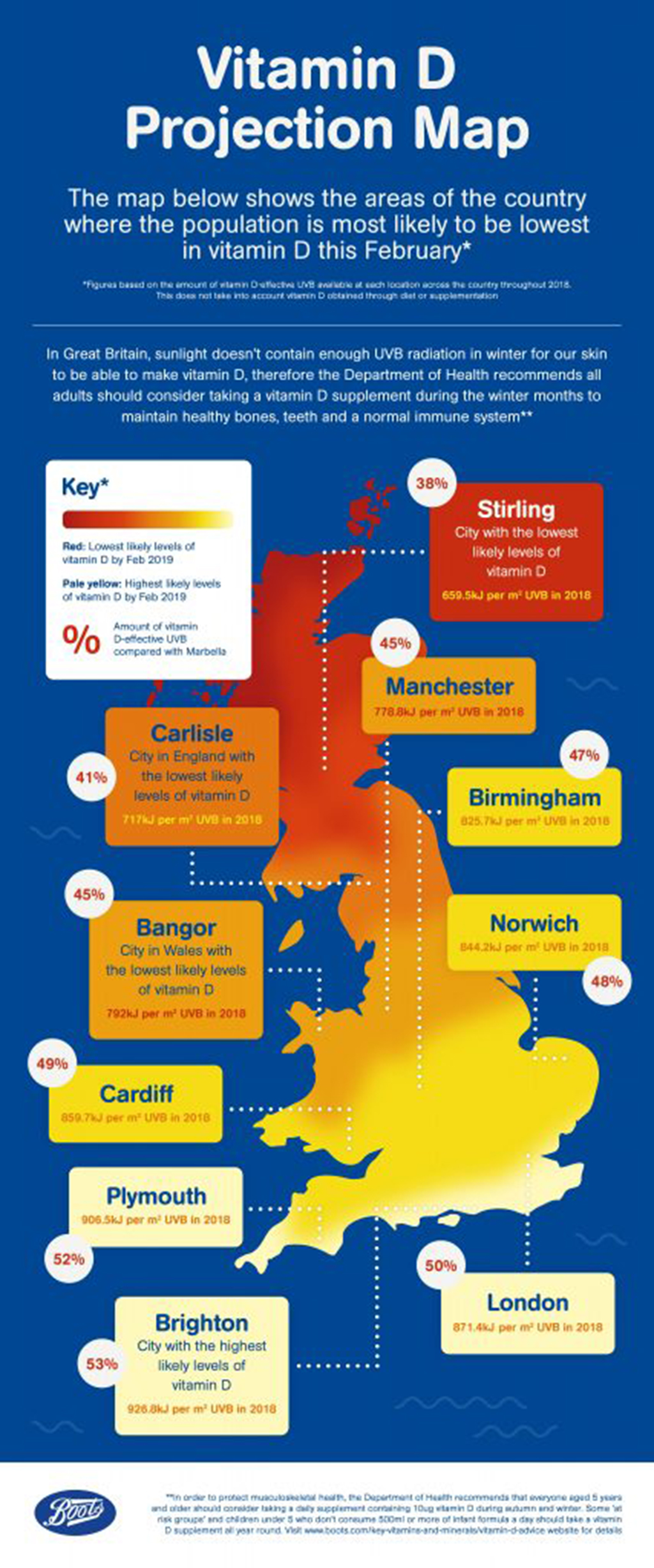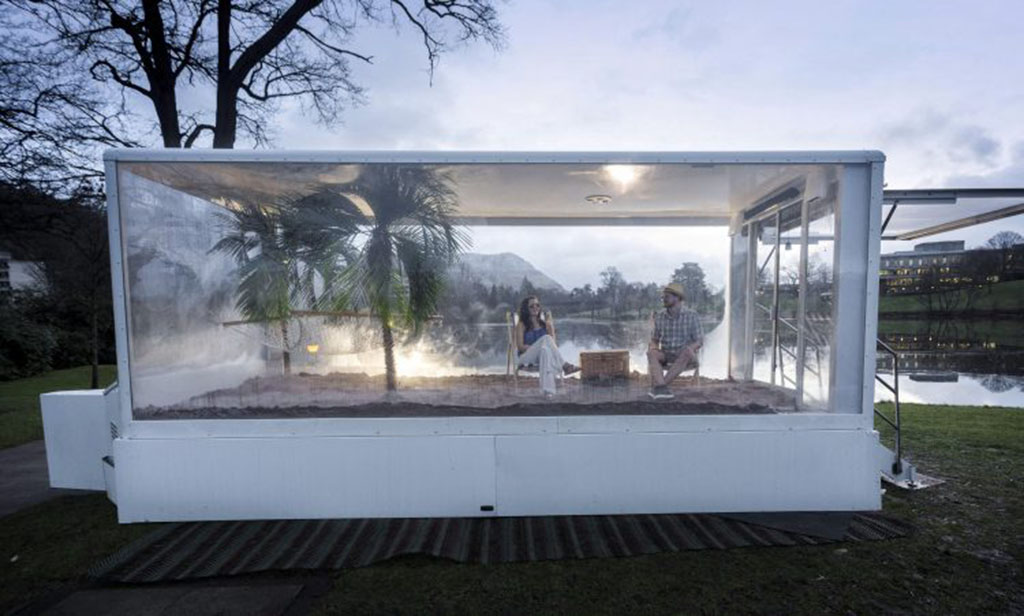Stirling is among the cities whose residents are most likely to be deficient in vitamin D, according to new research.
The Scottish city is predicted to receive just 38% of the vitamin D-effective UVB rays enjoyed in popular Spanish sunshine resort Marbella.
Scientists from Manchester University considered factors including available amounts of vitamin D-effective UVB rays, as well as cloud cover, ozone and aerosol levels before coming to their conclusion. Combining the data, experts worked with Boots Vitamins to create a ‘Vitamin D Projection Map’ which shows the areas of the country whose vitamin D levels will likely suffer in February.
In 2018, compared to those in Scotland, those living in the south of England are thought to have experienced around 28 more days when UV rays were high enough for the body to make a useful amount of vitamin D.

The ‘Vitamin D Projection Map’.
It has been widely documented that vitamin D helps regulate the amount of calcium and phosphate in the body, and is needed to help keep bones, teeth and muscles healthy.
Ann Webb, Professor of atmospheric radiation at the University of Manchester, said: ‘The analysis we have done for the UK in 2018 confirms the overall trend that UVB in sunlight decreases the further north you go – this will have a direct impact on the ability to make vitamin D of the population at each location.
‘There are many other factors that influence each individual’s circulating 25OHD, which determines vitamin D status. These include the amount of time a person spends in the sun, the colour of their skin and the amount of skin exposed, but the single greatest source of the vitamin for almost all of us comes from exposure to UVB in sunlight.’
Although human bodies can store vitamin D accumulated over the summer, research indicates that these stores are not sufficient and health conditions affecting bones and muscles are on the rise.
That said, to brighten up Stirling and raise the residents’ spirits, Boots Vitamins brought sands and palm trees to the city to brighten up the winter weather. Against a grey backdrop, the pop-up beach provided locals with a little winter pick-me-up, including vitamin D supplements, to help get them through the final weeks of winter.

The pop-up beach in Stirling raised the spirits of local residents during the darker days.
One passer-by, private tutor Ross Drummond, said: ‘It’s definitely an escape from the cold we’re having right now. It’s probably been years since I went to the beach, so this is great.’
Katrina Doulos, who also tried the beach out, said: ‘I love the beach – absolutely fantastic. It’s not surprising Stirling was found to have the lowest levels of vitamin D. It’s always dark and dank here, we don’t see enough of the sunshine.’
Boots Vitamins’ spokesperson Parminder Kaur added: ‘Boots Vitamins understands that we all need vitamin D to allow us to absorb calcium, to help keep bones, teeth and muscles healthy, and a lack of it can lead to poor bone development. Bone density develops from birth and reaches its peak at 30 years old; from then on you cannot build up more density.
‘While vitamin D is found in small amounts in certain foods such as oily fish like salmon, mackerel and sardines, and red meat and egg yolks, it is difficult for us to get the recommended amount of vitamin D from food alone, particularly during the autumn and winter months. This is why it is recommended by the Department of Health to consider taking a 10mcg daily supplement.’
TAGS

